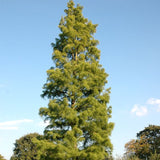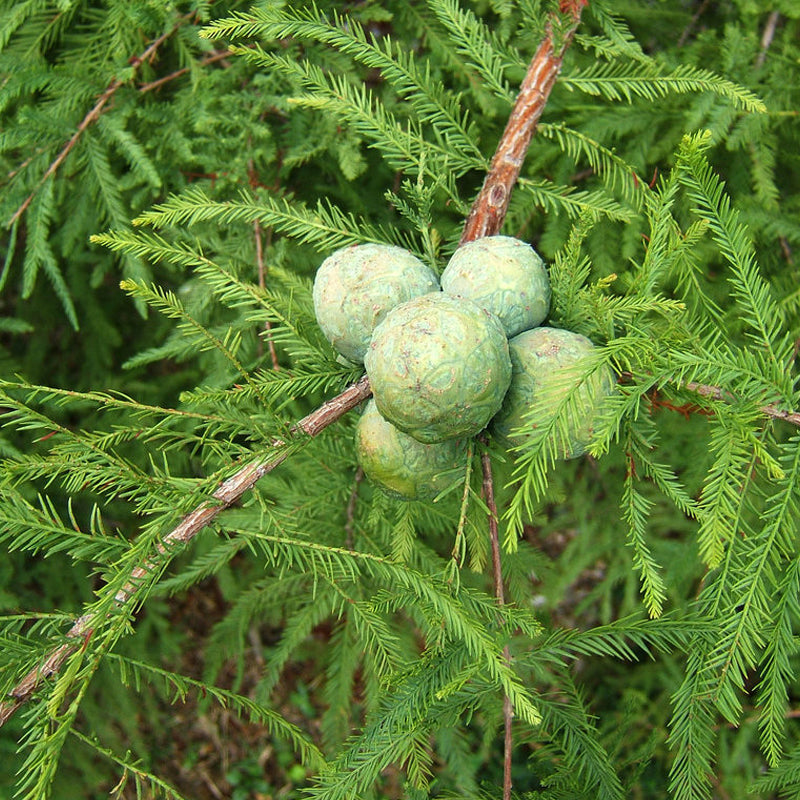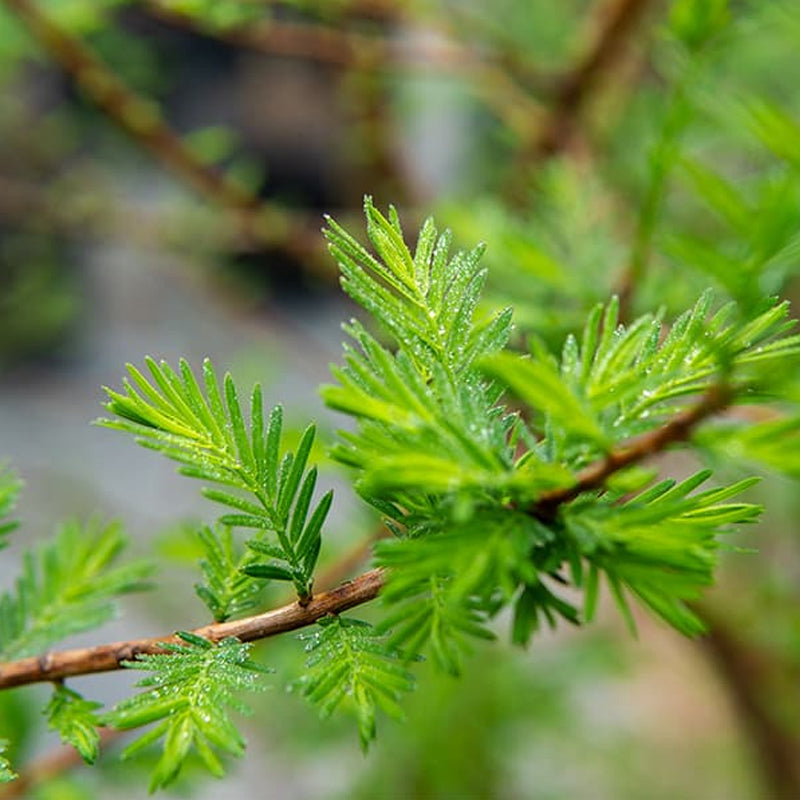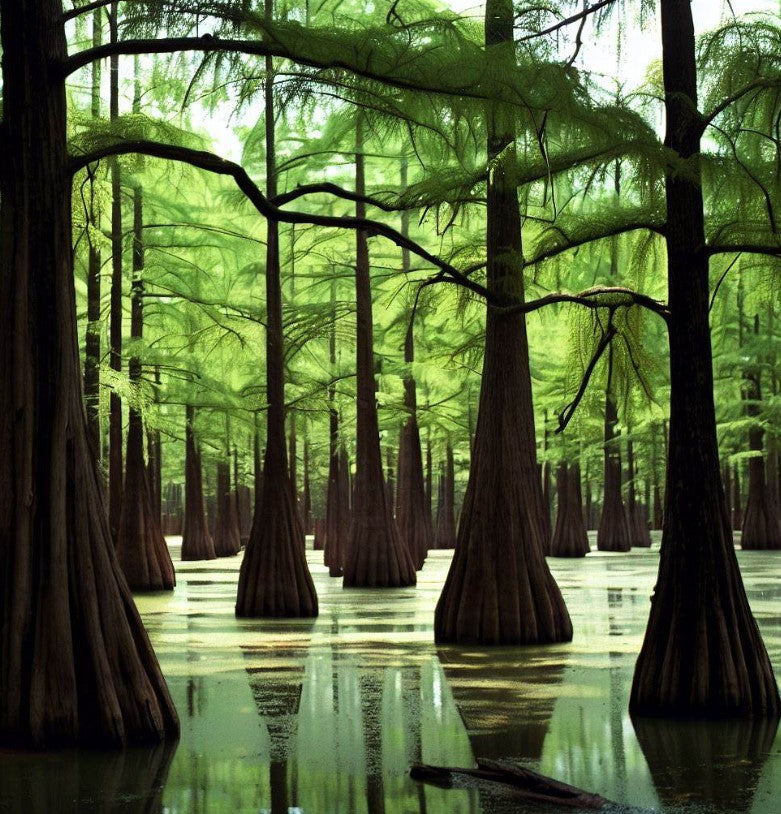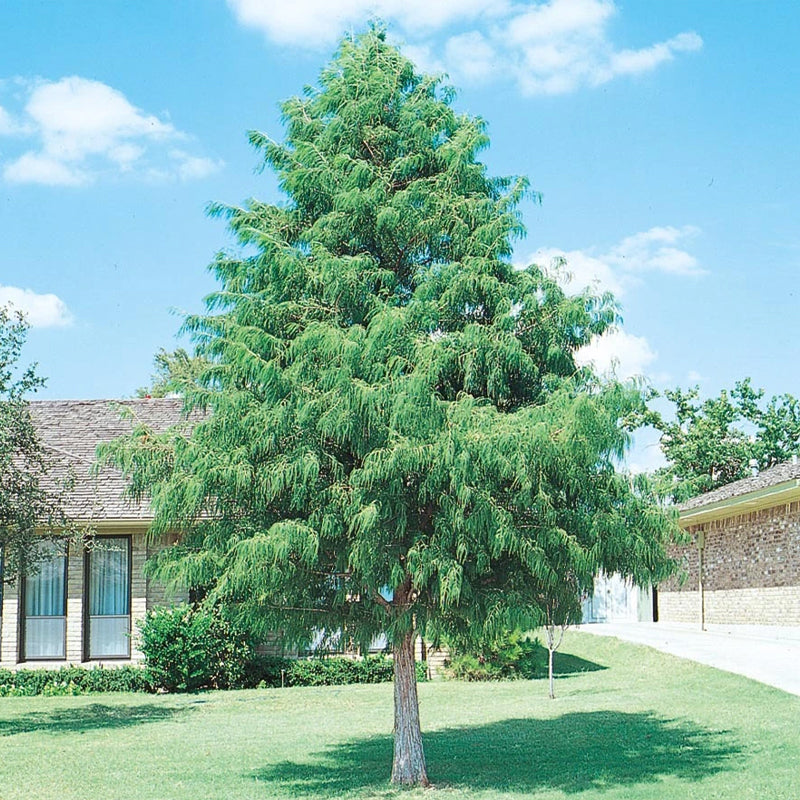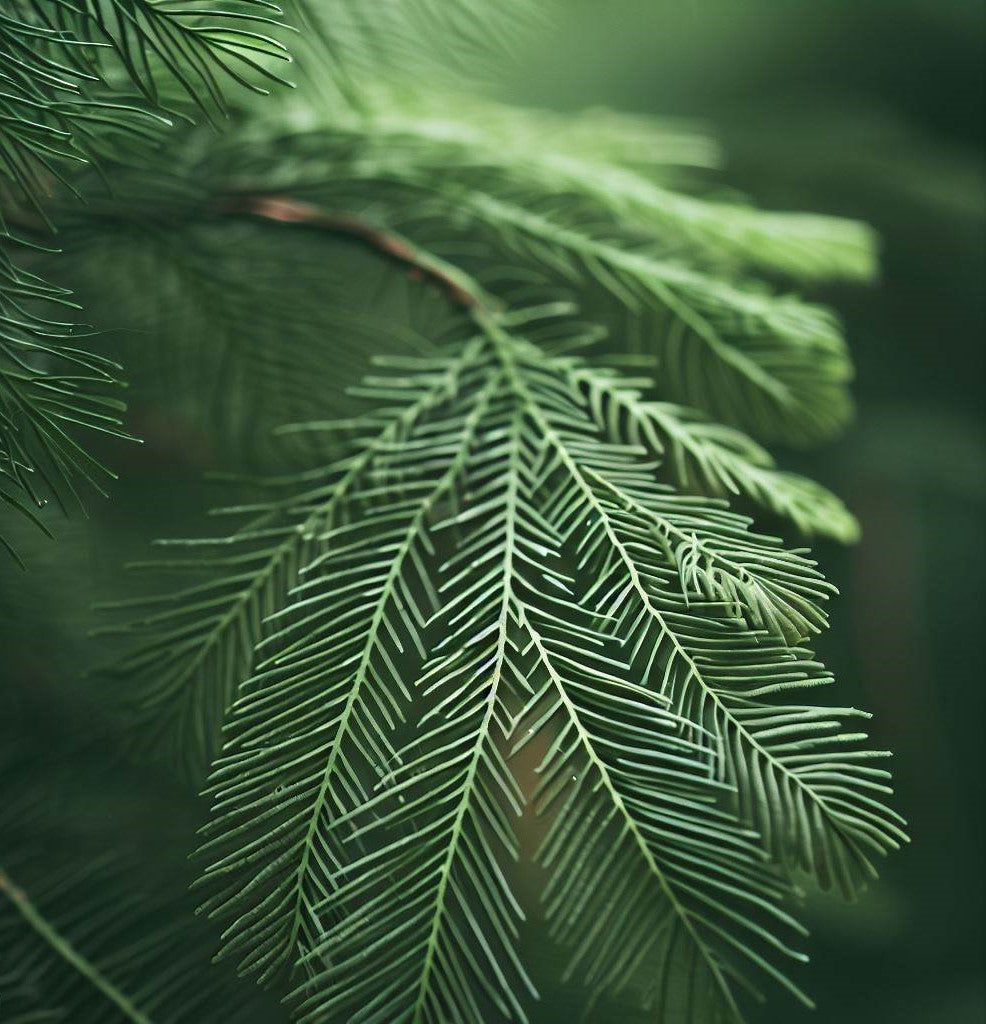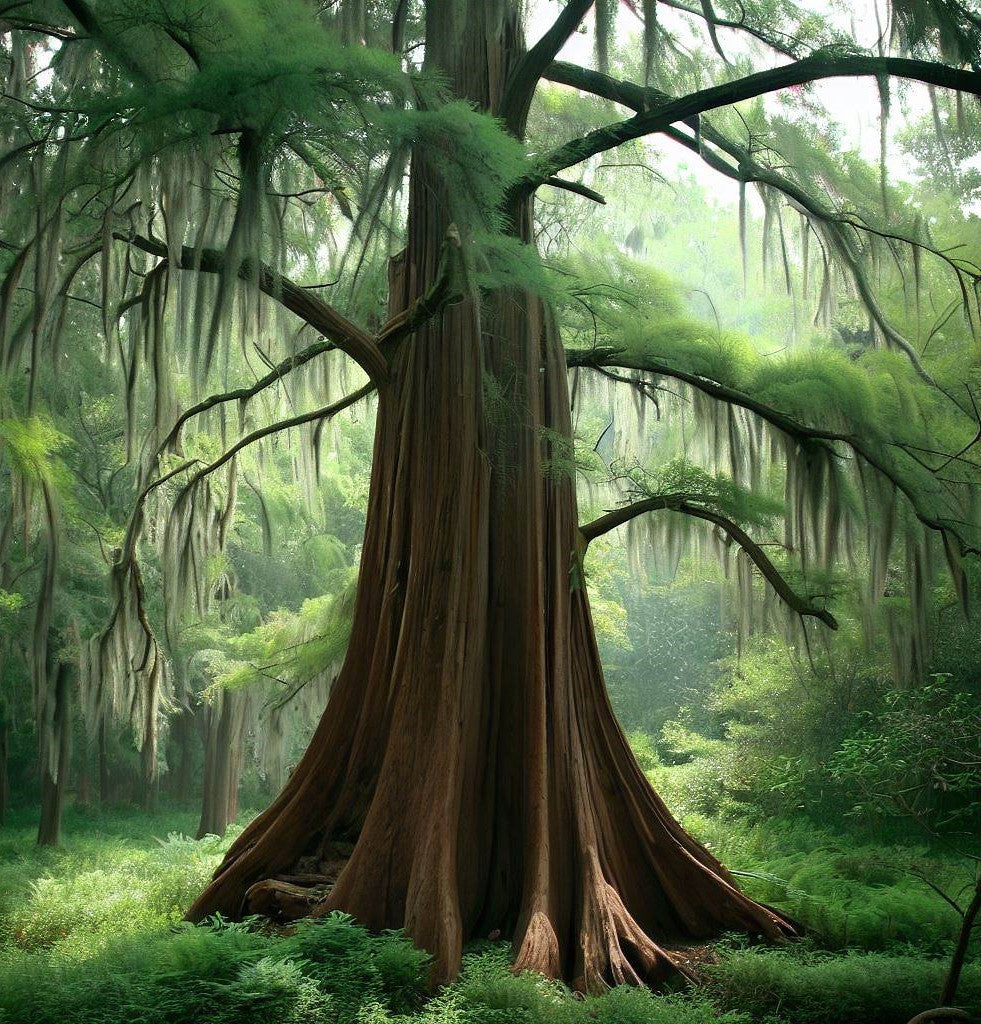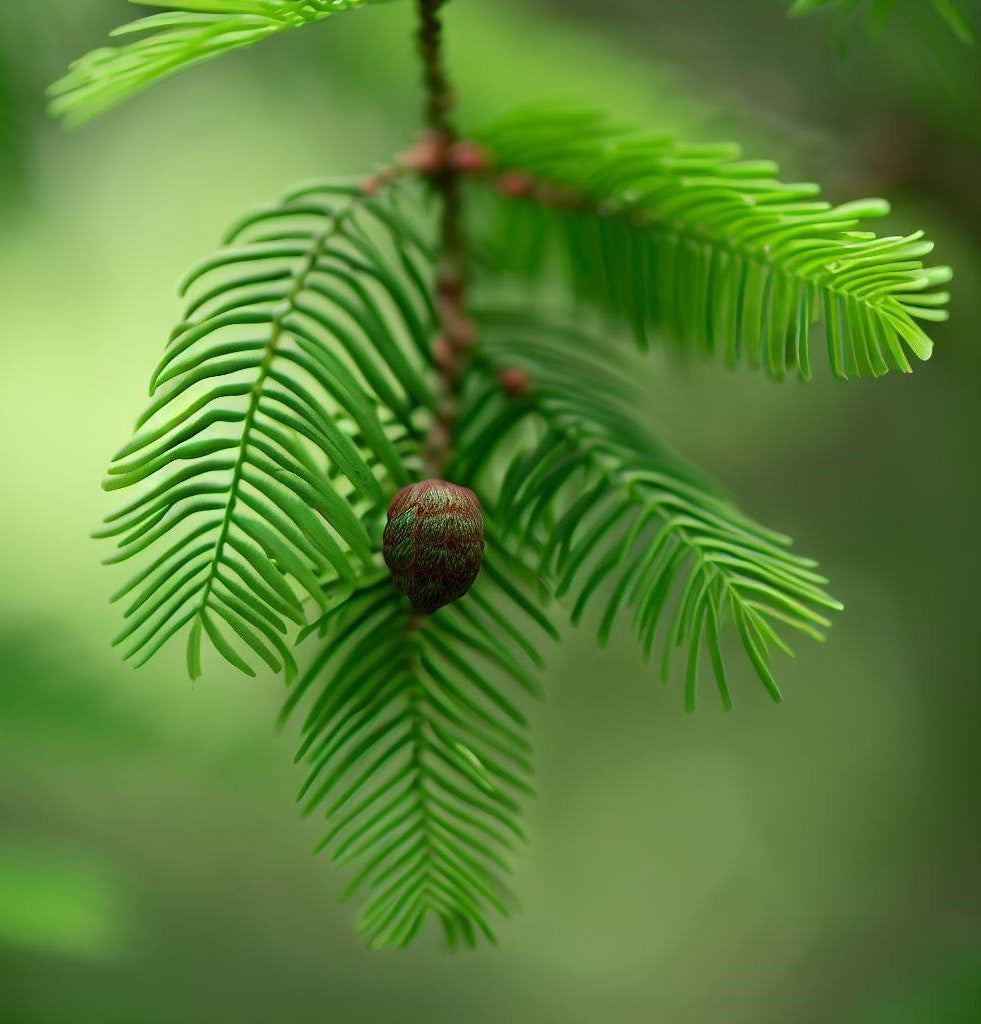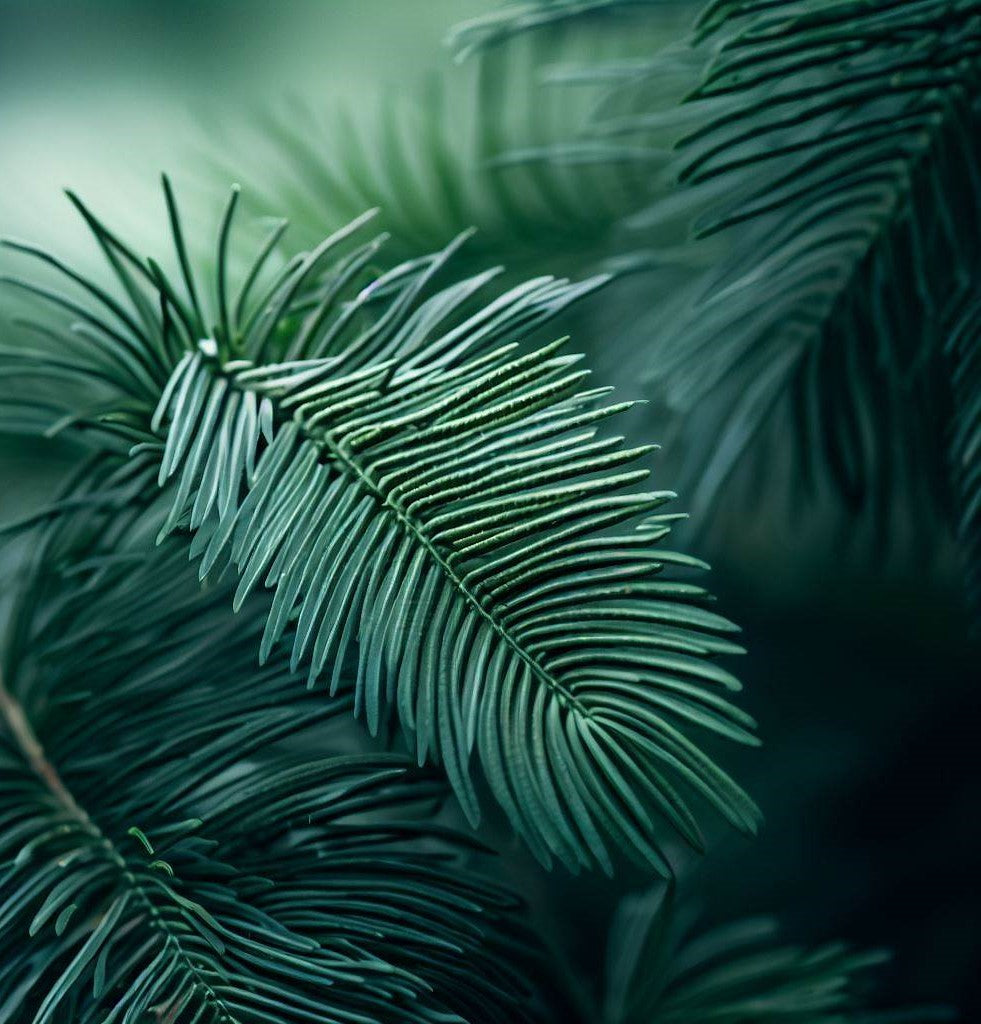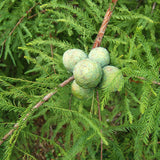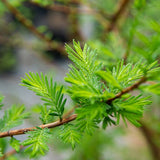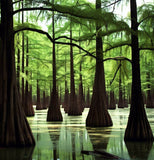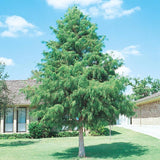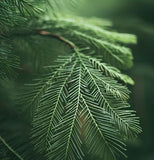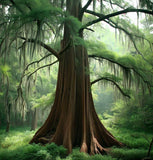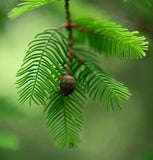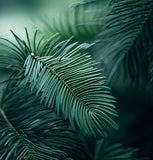Taxodium distichum Southern (Bald Cypress)
Taxodium distichum Southern (Bald Cypress) is a large deciduous coniferous tree that belongs to the family Cupressaceae. It is native to the southeastern United States and is known for its majestic size, unique appearance, and ability to thrive in wetland environments.
Appearance: The Southern Bald Cypress is a tall and long-lived tree that can reach heights of 100 to 120 feet (30 to 37 meters) or more. It has a conical or pyramidal shape when young, eventually developing a broader and more spreading crown with age. The tree features an interesting characteristic called "knees" – woody projections that emerge from the roots and rise above the water in wetland habitats. These knees serve various functions, including oxygen absorption and providing stability in wet soils.
Leaves: The leaves of the Bald Cypress are deciduous and needle-like. They are arranged in an alternate pattern along the branches and turn a beautiful rusty brown color before dropping in the fall.
Bark: The bark of the Southern Bald Cypress is reddish-brown and fibrous, often appearing to be shredded or peeling. This unique bark adds to the tree's visual appeal and gives it a distinctive texture.
Habitat and Range: The Southern Bald Cypress is native to the southeastern United States, primarily found in wetland areas such as swamps, marshes, and riverbanks. It has adapted well to environments with standing water and is known for its ability to thrive in waterlogged soil.
Adaptability: The Bald Cypress is highly adaptable and can grow in a variety of soil types, including clay, loam, and sandy soils. It is tolerant of both freshwater and brackish water conditions. This adaptability makes it a suitable tree for wetland restoration projects and landscaping around water bodies.
Environmental Benefits: The Southern Bald Cypress provides several environmental benefits. Its dense foliage offers shade and can help cool surrounding areas. The tree also has the ability to absorb excess water, making it useful in flood control and stormwater management. Additionally, the Bald Cypress provides habitat and food sources for various wildlife species.
If you are considering planting a Southern Bald Cypress, ensure that it is suitable for your specific climate and growing conditions. It thrives in full sun to partial shade and prefers moist or wet soil. While it can tolerate periodic flooding, it is important to avoid planting it in areas prone to prolonged waterlogging. With its towering height, unique appearance, and environmental contributions, the Southern Bald Cypress can be a stunning addition to landscapes and wetland habitats.
Botanical Name : Taxodium distichum Southern
Common Name : Bald Cypress
Height : 50-70 ft
Spread : 30 ft
Germination Info : Seed requires 60-90 days cold moist stratification
Hardiness zone : 4+
Average seed per ounce : Approx. 250

